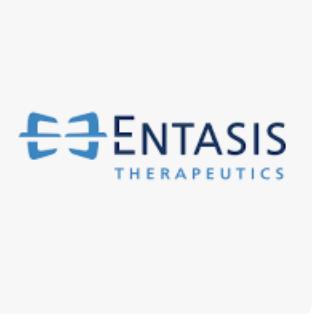
Yesterday I watched what I considered to be an historic FDA advisory committee meeting reviewing data supporting the approval of Entasis-Innoviva’s drug sulbactam-durlobactam (Sul-Duro) in the treatment of hospital-acquired pneumonia caused by highly resistant strains of Acinetobacter. In today’s blog I would like to discuss several aspects of this important event.
Sul-Durlo meets a desperate medical need. Acinetobacter remains one of the most resistant and difficult infections to treat. Current therapies of these resistant infections are either ineffective or toxic or both. Mortality rates for the kinds of infections targeted in the Entasis trial range from 30-80% depending on the therapy chosen and when it is prescribed. Happily, the numbers of patients suffering from these infections are still small. That means that conducting a robust clinical trial is very challenging and it means that achieving success in the marketplace will also be difficult. A further challenge is that Sul-Durlo is very specific for Acinetobacter – it is not expected to be very effective in the treatment of other infections. This will severely limit its use. That is a very good thing in that use, and ultimately emergence of resistance, will be limited. It’s not such a good thing as far as the potential market is concerned.
The Entasis trial was small. Only 125 patients were evaluated for the primary endpoint of the trial – all cause mortality at 28 days in patients with microbiologically documented Acinetobacter pneumonia. Sul-Durlo was compared to treatment with colistin – an old and highly toxic antibiotic of poor efficacy – but still the most reliable drug out there for these infections. The colistin-treated patients suffered a 32% mortality compared to 19% for Sul-Duro patients. All other measures of efficacy examined favored Sul-Duro. 27% of patients receiving colistin suffered kidney toxicity (8% was severe) compared to only 10% of Sul-Duro patients (1% was severe).
The entire safety database for Sul-Durlo was around 200 patients – smaller than the usual minimum accepted by the FDA for drugs targeting a critical unmet medical need like Sul-Durlo. Nevertheless, given these data supporting Sul-Durlo and the clear medical need addressed by the drug, the FDA advisory board was prepared to recommend approval the drug. The vote for approval was unanimous (all 12 voting members).
I haven’t watched an FDA antibiotics meeting since the “old guard” left FDA several years ago. I didn’t know any of the presenters from the agency. Time flies! The good news is that the agency’s review was positive and without controversy. There was none of the old statistical shenanigans claiming that the trial should have included thousands of patients or that the non-inferiority design was inadequate and should have been a superiority designed trial. These comments were standard fare just a few years ago and there are those still promulgating these ideas. Of course, large trials in this sort of infection are simply impossible to carry out – there are not enough patients. Superiority trials for antibiotics also remain, with a few exceptions, infeasible. Requiring very large trials or superiority trials as some suggest will put an end to almost all development of new antibiotics.
Entasis Therapeutics was originally a spin-off from Astra-Zeneca. The spin-out was the result of AZ’s decision to abandon antibiotic R&D. Many A-Z antibiotic researchers found a new home at Entasis which was conveniently located, at least initially, at the old A-Z campus outside of Boston. But Entasis struggled financially for years. It became a wholly owned subsidiary of Innoviva Ltd. when Innoviva purchased the remaining 40% of Entasis shares last year. At the time, Entasis had completed phase 3 trials for sulbactam-durlobactam in the treatment of hospital acquired pneumonia caused by resistant strains of Acinetobacter and was and still is conducting phase 3 trials with its partner, GARDP, on zoliflodacin for the treatment of gonorrhea. Zoliflodacin has the advantage of being active against resistant strains and will be a welcome addition to our treatment choices if it is successful in its ongoing trials.
But the question that remains is – now what? Innoviva is a holding company that evolved from an antibiotic biotech, Theravance. It has royalty agreements with GSK for respiratory products and has invested in Entasis, LaJolla Pharmaceuticals (sells eravacycline) and Armata Pharmaceuticals (developing bacteriophage therapy) – all antibacterial companies with limited market potential. The history of this area is that every antibiotic biotech that has seen its product approved over the last decade, with one exception, has declared bankruptcy or has been purchased for pennies on the dollar. Given the limited number of patients available for treatment with Sul-Duro and given that some centers will continue to use toxic and ineffective colistin (money? other?), will Entasis/Innoviva go the way of all the others after approval? Will this historic approval (assuming the FDA follows the advice of its ad board) just be further proof that no good deed shall go unpunished?
#Reprinted with permission. Dr. Shlaes' original post can be read here.



